For more information:
Note that the latest stuff may not yet be indexed.
The Klezmer Shack directory of articles
Here I am procrastinating. Three more papers and I am through with school. But, once again, so much good music has accumulated on the shelves. There is nothing to do but try to get the word out.
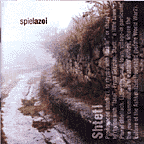 Spiel Azoi / Shtetl (spiel 001, 2001). From down under comes yet another excellent traditional klezmer album. Spiel Azoi's debut album, "Shtetl" is quite traditional, performed traditionally, such that the surprise is not in the choice of songs, but in how absolutely fresh and lively and current they sound. The band focuses more on traditional Yiddish songs, rather than the American Yiddish Theatre or the instrumental repertoire, although both are represented, from the album's concluding "Hopkele", or even the very American "Di Grine Kuzine" (but, was it so different, one wonders, for new Jewish immigrants to Australia?) to an excellent "Araber Tantz" and opening "Rumeinisher Doyna". Rather, the focus here is on songs that Jewish emigrants to Australia brought with them: "Di Sapozhkelelk," "Tumbalalaika," "Offn Pripitchick...." The lead singer, Sarah Mandie sings a treat, and the band behind her is every bit as good. Taking a page from Klezical Tradition's wonderful "Family Portrait" of a couple years ago, the band also weaves in clips from their parents or grandparents remembering, although here it is clearly intended more to establish a general context for the music, rather than for the specific memories. In any event, any American or European reviewer who hasn't glommed on to the fact that some of the best klezmer comes from Australia can start right here. (Other Australian bands reviewed on these pages include Klezmania, Klezmeritis, Closet Klezmer.)
. [GRADE: A]
Spiel Azoi / Shtetl (spiel 001, 2001). From down under comes yet another excellent traditional klezmer album. Spiel Azoi's debut album, "Shtetl" is quite traditional, performed traditionally, such that the surprise is not in the choice of songs, but in how absolutely fresh and lively and current they sound. The band focuses more on traditional Yiddish songs, rather than the American Yiddish Theatre or the instrumental repertoire, although both are represented, from the album's concluding "Hopkele", or even the very American "Di Grine Kuzine" (but, was it so different, one wonders, for new Jewish immigrants to Australia?) to an excellent "Araber Tantz" and opening "Rumeinisher Doyna". Rather, the focus here is on songs that Jewish emigrants to Australia brought with them: "Di Sapozhkelelk," "Tumbalalaika," "Offn Pripitchick...." The lead singer, Sarah Mandie sings a treat, and the band behind her is every bit as good. Taking a page from Klezical Tradition's wonderful "Family Portrait" of a couple years ago, the band also weaves in clips from their parents or grandparents remembering, although here it is clearly intended more to establish a general context for the music, rather than for the specific memories. In any event, any American or European reviewer who hasn't glommed on to the fact that some of the best klezmer comes from Australia can start right here. (Other Australian bands reviewed on these pages include Klezmania, Klezmeritis, Closet Klezmer.)
. [GRADE: A]
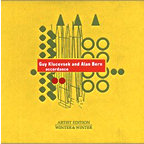 Guy Klucevsek and Alan Bern / Accordance (Winter & Winter 910058-2, 2001, WinterProduction@compuserve.com) Alan Bern, KCB alum, and musical director of the band that invented "New Jewish Music," Brave Old World, got together last year to play with my absolute favorite accordion player other than himself, Guy Klucevsek. (Those of you who have been reading over and over and over again about how much I love Anthony Coleman's "Disco by Night" will recall that Guy plays accordion on that CD.) The new album, "Accordance," was released in the US at the beginning of January. It's not klezmer, of course, but it is such astoundingly good music that I'd like to make sure that as many people as possible hear it. From the opening drone of "Life, Liberty and the Proscuitto Happiness" through Bern's cheering send up of marching music, "Happy," this album is a joy. It is what ears need to listen to when they are tired of listening. It is what ears rejoice in when the mind is ready to listen closely. The two accordionists, in a manner reminiscent of Klucevsek's recent "Accordion Tribe" CD, blend folk and experimental rhythms, creating a new people's music, a new folk music, in which the harmonies and disharmonies of our age are overlaid on just about every imaginable Western music tradition. Of especial importance in this regard are the three short pieces about life in a New York coffee bar, the cutesy-titled, "Mug Shots", including "The Girl with the Rose Hips" and "Decaffinata". Not even klezmer is neglected, as Bern's "Dueling Dovidls" celebrates. Anyway, it's been several months, and I think I'll be listening to this one, like my Uri Caine/Mahler Variations, for many months still to come. [GRADE: A+]
Guy Klucevsek and Alan Bern / Accordance (Winter & Winter 910058-2, 2001, WinterProduction@compuserve.com) Alan Bern, KCB alum, and musical director of the band that invented "New Jewish Music," Brave Old World, got together last year to play with my absolute favorite accordion player other than himself, Guy Klucevsek. (Those of you who have been reading over and over and over again about how much I love Anthony Coleman's "Disco by Night" will recall that Guy plays accordion on that CD.) The new album, "Accordance," was released in the US at the beginning of January. It's not klezmer, of course, but it is such astoundingly good music that I'd like to make sure that as many people as possible hear it. From the opening drone of "Life, Liberty and the Proscuitto Happiness" through Bern's cheering send up of marching music, "Happy," this album is a joy. It is what ears need to listen to when they are tired of listening. It is what ears rejoice in when the mind is ready to listen closely. The two accordionists, in a manner reminiscent of Klucevsek's recent "Accordion Tribe" CD, blend folk and experimental rhythms, creating a new people's music, a new folk music, in which the harmonies and disharmonies of our age are overlaid on just about every imaginable Western music tradition. Of especial importance in this regard are the three short pieces about life in a New York coffee bar, the cutesy-titled, "Mug Shots", including "The Girl with the Rose Hips" and "Decaffinata". Not even klezmer is neglected, as Bern's "Dueling Dovidls" celebrates. Anyway, it's been several months, and I think I'll be listening to this one, like my Uri Caine/Mahler Variations, for many months still to come. [GRADE: A+]
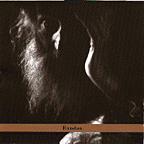 Satlah / Live at the Tonic - Exodus (Tzadik TZ7149, 2001, www.tzadik.com) I've been lying in the chair, in and out of sleep as the painkillers have more, sometimes less success against a raging toothache. As I lie there asleep I dream that I put on a John Coltrane album. "That's strange," I wonder, "John Coltrane is playing something that sounds very Jewish!" I wake up to discover that I had put this new Satlah album in the changer last night. As in the case of the Middle East/Jewish fusion band, Davka, it is not always so easy to separate out what makes this specifically "Jewish" music. Rather, drawing from an analogy I used to use when describing how to write political satire that is funny, rather than didactic and too obviously politically correct, one gets the sense of musicians playing jazz who are at the same time steeped in Jewish melody as well. Then, having become informed, they play the music that is in their hearts. Hopefully, as here, that music is sufficiently compelling and interesting as to obviate the need for careful pigeonholing. [GRADE: A]
Satlah / Live at the Tonic - Exodus (Tzadik TZ7149, 2001, www.tzadik.com) I've been lying in the chair, in and out of sleep as the painkillers have more, sometimes less success against a raging toothache. As I lie there asleep I dream that I put on a John Coltrane album. "That's strange," I wonder, "John Coltrane is playing something that sounds very Jewish!" I wake up to discover that I had put this new Satlah album in the changer last night. As in the case of the Middle East/Jewish fusion band, Davka, it is not always so easy to separate out what makes this specifically "Jewish" music. Rather, drawing from an analogy I used to use when describing how to write political satire that is funny, rather than didactic and too obviously politically correct, one gets the sense of musicians playing jazz who are at the same time steeped in Jewish melody as well. Then, having become informed, they play the music that is in their hearts. Hopefully, as here, that music is sufficiently compelling and interesting as to obviate the need for careful pigeonholing. [GRADE: A]
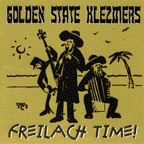 Golden State Klezmers / Freilach Time! (1998). Getting back to "traditional" klezmer, I note my recent discovery of the Golden State Klezmers, who in this 1997 album demonstrate full and fluid mastery of the genre. Again, the repertoire is very much in the mainstream of American recorded klezmer. Here it is played with spirit and excitement. If I have any complaint at all, it is too much "Bar Mitzvah beat" in the drums. The sound is dominated by Zinovy Goro's clarinet, but occasionally, as on the "Promenade" or "Der Yidn in Palestine" there is a chance for trombonist Daniel Weinstein or violinist Ezra Kliger to step out, as well. All this, plus guests such as Stu Brotman on bass, Zalmen Mlotek on piano, and even a few arrangements by Hankus Netsky, make this is an excellent example of American-interpreted Jewish wedding music at its best. [GRADE: A]
Golden State Klezmers / Freilach Time! (1998). Getting back to "traditional" klezmer, I note my recent discovery of the Golden State Klezmers, who in this 1997 album demonstrate full and fluid mastery of the genre. Again, the repertoire is very much in the mainstream of American recorded klezmer. Here it is played with spirit and excitement. If I have any complaint at all, it is too much "Bar Mitzvah beat" in the drums. The sound is dominated by Zinovy Goro's clarinet, but occasionally, as on the "Promenade" or "Der Yidn in Palestine" there is a chance for trombonist Daniel Weinstein or violinist Ezra Kliger to step out, as well. All this, plus guests such as Stu Brotman on bass, Zalmen Mlotek on piano, and even a few arrangements by Hankus Netsky, make this is an excellent example of American-interpreted Jewish wedding music at its best. [GRADE: A]
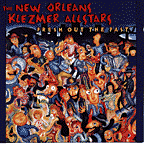 New Orleans Klezmer AllStars / Fresh Out the Past (Shanachie SHA 9015, 1999). I'm torn when I listen to the New Orleans Klezmer AllStars. On the one hand, they are clearly one of the hardest-working, constantly-touring klezmer bands in the United States. Probably, anywhere. On the other hand, sometimes listening to their albums feels like getting hit over the head over and over and over by a klezmer-shaped rock 'n' roll mallet. Somehow, in fusing klezmer with New Orleans funk, there aren't nearly as many musical doors opened as become inaccessible when one has to keep that thumpa thumpa beat going. Songs like "The Unholy Chazir" with its "oriental" funkiness don't move me as much as when I first heard those ideas.
New Orleans Klezmer AllStars / Fresh Out the Past (Shanachie SHA 9015, 1999). I'm torn when I listen to the New Orleans Klezmer AllStars. On the one hand, they are clearly one of the hardest-working, constantly-touring klezmer bands in the United States. Probably, anywhere. On the other hand, sometimes listening to their albums feels like getting hit over the head over and over and over by a klezmer-shaped rock 'n' roll mallet. Somehow, in fusing klezmer with New Orleans funk, there aren't nearly as many musical doors opened as become inaccessible when one has to keep that thumpa thumpa beat going. Songs like "The Unholy Chazir" with its "oriental" funkiness don't move me as much as when I first heard those ideas. 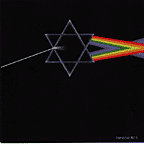 Still, this most recent album also reminds me why I'll also see them any chance I get. In addition to the aforementioned klezmer/rock, there is a lot of new going on here, starting with the very North African "Dr. Lizard" or the very interesting transformed slow dance, "Coney Island White Fish" with some perfect sax flowing into the stately accordion lines. The "speed klez" of previous albums seems less important here as the and explores some new directions, as "Klezmer Defiance" is followed by the more rock-jamming "Casablanca to LA", and the album closes with a piece that is primarily (barring some percussion) just the accordion exploring new rhythms and melodies. I'll still catch these guys live every chance I get, and it's about time I reminded klezmershack readers that these AllStars are still making hot music. Catchy sendoff of Pink Floyd on the inner cover, too! [GRADE: A-]
Still, this most recent album also reminds me why I'll also see them any chance I get. In addition to the aforementioned klezmer/rock, there is a lot of new going on here, starting with the very North African "Dr. Lizard" or the very interesting transformed slow dance, "Coney Island White Fish" with some perfect sax flowing into the stately accordion lines. The "speed klez" of previous albums seems less important here as the and explores some new directions, as "Klezmer Defiance" is followed by the more rock-jamming "Casablanca to LA", and the album closes with a piece that is primarily (barring some percussion) just the accordion exploring new rhythms and melodies. I'll still catch these guys live every chance I get, and it's about time I reminded klezmershack readers that these AllStars are still making hot music. Catchy sendoff of Pink Floyd on the inner cover, too! [GRADE: A-]
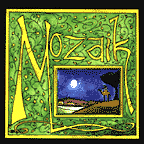 Mozaik / Beyond Words (INS6012-2, 2000). Suppose you could combine the Grateful Dead as they sound in the middle of one of their long, ethereal jams, with, say, the Diaspora Yeshiva Band? It wasn't a question I was looking to answer, but "Mozaic, in their debut album, provide a passable answer. Blending everything from Dick Dale through psychedelia, with simple Jewish nigunim, the band provides an interesting exploration of a new world Jewish music. Or, at least, this is an exploration of music that pulls in all of these influences. The problem with jam bands is that, at some point, the music sounds a bit like it was all put into a blender. That makes it great for grooving, and great for dancing; an incredible temptation outdoors in good weather, ... but for me, at least, this album neither transcends nor makes me hungry for more. That doesn't mean that "Hasidic Surf" isn't great fun, or that "Senegal" wouldn't be a great song to simply sit and be with, but I'm not convinced. I have a feeling that I'll listen to this music years from now, not with the fondness and depth that has me putting old Grateful Dead disks on the changer, but with the bemusement that makes listening to old Shlomo Carlebach albums interesting, but not something that I do more than every few years. The individual musicians here are very good, but I don't get a sense of complexity or deep interplay that makes the band yet more than a collection of talented parts. Fans of jam bands, on the other hand, and especially fans of that branch of Jewish music pioneered by Shlomo Carlebach and furthered by bands such as "Diaspora" may feel quite differently; indeed, if these things speak to your heart, the odds are good that this will, as well. [GRADE: B]
Mozaik / Beyond Words (INS6012-2, 2000). Suppose you could combine the Grateful Dead as they sound in the middle of one of their long, ethereal jams, with, say, the Diaspora Yeshiva Band? It wasn't a question I was looking to answer, but "Mozaic, in their debut album, provide a passable answer. Blending everything from Dick Dale through psychedelia, with simple Jewish nigunim, the band provides an interesting exploration of a new world Jewish music. Or, at least, this is an exploration of music that pulls in all of these influences. The problem with jam bands is that, at some point, the music sounds a bit like it was all put into a blender. That makes it great for grooving, and great for dancing; an incredible temptation outdoors in good weather, ... but for me, at least, this album neither transcends nor makes me hungry for more. That doesn't mean that "Hasidic Surf" isn't great fun, or that "Senegal" wouldn't be a great song to simply sit and be with, but I'm not convinced. I have a feeling that I'll listen to this music years from now, not with the fondness and depth that has me putting old Grateful Dead disks on the changer, but with the bemusement that makes listening to old Shlomo Carlebach albums interesting, but not something that I do more than every few years. The individual musicians here are very good, but I don't get a sense of complexity or deep interplay that makes the band yet more than a collection of talented parts. Fans of jam bands, on the other hand, and especially fans of that branch of Jewish music pioneered by Shlomo Carlebach and furthered by bands such as "Diaspora" may feel quite differently; indeed, if these things speak to your heart, the odds are good that this will, as well. [GRADE: B]
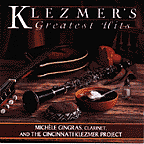 The Cincinnati Klezmer Project / Klezmer's Greatest Hits, 1998 (Mastersound 3591). This is another album that arrived during a period, a couple of years ago, when things were frantic and not much got listened to. I had been especially eager to give this particular recording a serious listen because the band has been around for many years, and because the idea of recording a "Klezmer's Greatest Hits" was an interesting marketing idea--but what would it sound like in real life? The core band was accompanied by Michèle Gingras, an amazing clarinet player at Miami University in Ohio, who joined a few years earlier. The results are, happily, what one would hope for. Although the repertoire is far from "just" klezmer--it includes popular Yiddish, Israeli, and Yiddish Theatre songs--the result is a CD with a reasonable collection of the most popular Jewish wedding tunes, even unto a delightful "Miserlu," a song critical to, and even more popular at American Jewish weddings than even, maybe, the album closer, "Hava Nagila." Tell the dancers that "Miserlu" is neither Jewish, nor traditional, and they'll look at you as if you made no sense--as indeed you won't. Klezmer, by definition, is wedding music. If we want to dance to "Miserlu" at our weddings, then it's Jewish Klezmer music, and very much one of our "greatest hits." And that's the way it is! Although I have some minor quibbles--I would not have chosen the Naomi Shemer adaptation ("Lo Ahavti Dai") of a popular Russian folksong become Hasidic Nign--that tune, as different from the inclusion of "Miserlu", is an "Israelicism," not traditional American! And, despite tradition, I would have resisted "Sunrise Sunset." In the end, this is a curious album. These tunes could be considered klezmer's greatest hits--most often, but not always, these are the hits that were popular with our parents, not the songs most beloved of the generation or two that have come of age in the last twenty years. Still, it's a lovely album, and a hybrid of the Jewish experience, partly as played on disks no longer available from the Fifties and Sixties, and partly as danced post-revival. Tradition and transition. That's what klezmer is all about, anyway. [GRADE: A]
The Cincinnati Klezmer Project / Klezmer's Greatest Hits, 1998 (Mastersound 3591). This is another album that arrived during a period, a couple of years ago, when things were frantic and not much got listened to. I had been especially eager to give this particular recording a serious listen because the band has been around for many years, and because the idea of recording a "Klezmer's Greatest Hits" was an interesting marketing idea--but what would it sound like in real life? The core band was accompanied by Michèle Gingras, an amazing clarinet player at Miami University in Ohio, who joined a few years earlier. The results are, happily, what one would hope for. Although the repertoire is far from "just" klezmer--it includes popular Yiddish, Israeli, and Yiddish Theatre songs--the result is a CD with a reasonable collection of the most popular Jewish wedding tunes, even unto a delightful "Miserlu," a song critical to, and even more popular at American Jewish weddings than even, maybe, the album closer, "Hava Nagila." Tell the dancers that "Miserlu" is neither Jewish, nor traditional, and they'll look at you as if you made no sense--as indeed you won't. Klezmer, by definition, is wedding music. If we want to dance to "Miserlu" at our weddings, then it's Jewish Klezmer music, and very much one of our "greatest hits." And that's the way it is! Although I have some minor quibbles--I would not have chosen the Naomi Shemer adaptation ("Lo Ahavti Dai") of a popular Russian folksong become Hasidic Nign--that tune, as different from the inclusion of "Miserlu", is an "Israelicism," not traditional American! And, despite tradition, I would have resisted "Sunrise Sunset." In the end, this is a curious album. These tunes could be considered klezmer's greatest hits--most often, but not always, these are the hits that were popular with our parents, not the songs most beloved of the generation or two that have come of age in the last twenty years. Still, it's a lovely album, and a hybrid of the Jewish experience, partly as played on disks no longer available from the Fifties and Sixties, and partly as danced post-revival. Tradition and transition. That's what klezmer is all about, anyway. [GRADE: A]
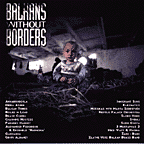 Balkans without Borders, 1999 (Omnium Recordings, OMM 2024, 1999). The most-recent tragic fighting in the Balkans has prompted an awful lot of bad polemics about "gee, that's all they ever do", a marvellous theory that then raises the question of, "if these folks have done nothing but fight for thousands of years, why are their villages so heterogenous?". Hmm. I mention this to prepare you for the fact that this stunningly wonderful compilation includes all sorts of music from all over the Balkans, in its affirming diversity, ranging not only from Albanian to Serbian and who knows where exactly, from the traditional to the edges--all of them. The album opens, for instance, with a traditional-style Macedonian village song sung by a wonderful Oakland world music band, "Charming Hostess." The next band up is a relatively traditional Balkan mix as played by kids who grew up here in America and have added a few influences. Add the Brave Combo, pass through what sounds like Rom music played by Bo Diddley, the incredible village brass sounds of Zlatne Uste, note a quick one by the Klezmatics, another by Muzsikás, plus Three Mustaphas Three, and end the CD with Bulgarian dances played by Boiled in Lead.... Well, you get the idea. Produced as a fund-raiser for "Medicine without Frontiers" (contact info included as part of the CD), the music is abundant, well-chosen, and well-documented--once you're turned on, you'll be able to find the bands and get more of their music as well. But, if you're like me, you'll enjoy just listening to the diversity of life in the Balkans, periodically, and will be thrilled to start here. Visit the CD website at www.omnium.com/balkans . [GRADE: A+]
Balkans without Borders, 1999 (Omnium Recordings, OMM 2024, 1999). The most-recent tragic fighting in the Balkans has prompted an awful lot of bad polemics about "gee, that's all they ever do", a marvellous theory that then raises the question of, "if these folks have done nothing but fight for thousands of years, why are their villages so heterogenous?". Hmm. I mention this to prepare you for the fact that this stunningly wonderful compilation includes all sorts of music from all over the Balkans, in its affirming diversity, ranging not only from Albanian to Serbian and who knows where exactly, from the traditional to the edges--all of them. The album opens, for instance, with a traditional-style Macedonian village song sung by a wonderful Oakland world music band, "Charming Hostess." The next band up is a relatively traditional Balkan mix as played by kids who grew up here in America and have added a few influences. Add the Brave Combo, pass through what sounds like Rom music played by Bo Diddley, the incredible village brass sounds of Zlatne Uste, note a quick one by the Klezmatics, another by Muzsikás, plus Three Mustaphas Three, and end the CD with Bulgarian dances played by Boiled in Lead.... Well, you get the idea. Produced as a fund-raiser for "Medicine without Frontiers" (contact info included as part of the CD), the music is abundant, well-chosen, and well-documented--once you're turned on, you'll be able to find the bands and get more of their music as well. But, if you're like me, you'll enjoy just listening to the diversity of life in the Balkans, periodically, and will be thrilled to start here. Visit the CD website at www.omnium.com/balkans . [GRADE: A+]
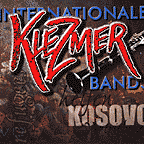 Klezmer Bands Helfen Kosovo (Phono Special Edition, PCD 13001, 1999). On the other hand, suppose you wanted to help, but were reasonably clueless? Then you might put out something like this compilation. Put out in response to the situation in Kosovo a couple of years ago, it is not at all clear where the proceeds went. Indeed, since the support website no longer exists, and since there is no documentation with the CD, it isn't clear that any money went anywhere other than to the person who put this together, or to the record company. That is quite frustrating, because as a collection of good, mainstream klezmer, this CD does an excellent job of presenting a wide range of excellent bands from around the world, ranging from less-often heard bands such as the Cincinnati Klezmer Project, Klezmer Pow Wow (Switzerland), Hester Street (New York), Chana Nussbaum & Spielniks (Copenhagen), even the wondeful Klezmer en Buenos Aires, as well as the usual suspects, ranging from Metropolitan Klezmer to Klezmokum, to the people who passed a copy of this on to me: Maxwell St. Klezmer (Chicago, whose "Hopekele" is one of the CD high points). Worse, no contact information--not by mail, not by e-mail, not by web, not by anything, is provided for any of the bands in the nicely designed, copious, liner insert. You find out the name of the band, and where they are from; even who is playing in the band. But how do you reach them? (Most of them, of course, are listed here on the Klezmershack.) From what recording were these contributions taken? Nada. No luck. In short, a great compilation of wonderful music, possibly in support of a good cause, but to no avail--not to the cause, not to the musicians, not even to people who might want to get their own copy of this CD. To find out which clueless person put this together, mosey over to the website at www.jasa.ch for a lesson in how to create great eye candy while best avoiding the commitment of actually conveying useful information--or in the case of this CD, actual aid or publicity to an important cause. You may not find anything functional, but you'll know what the guy looks like. Phooey. I'd give this an "F", but the music, is, after all great!. If only the CD were actually available somewhere. If only, were the CD sold out, the contact info for the bands and the organization(s) supported by the project were still in place! Back to school, Jack Säuberli! The useless URL for the CD is www.jasa.ch/klezmer-cd. [GRADE: C]
Klezmer Bands Helfen Kosovo (Phono Special Edition, PCD 13001, 1999). On the other hand, suppose you wanted to help, but were reasonably clueless? Then you might put out something like this compilation. Put out in response to the situation in Kosovo a couple of years ago, it is not at all clear where the proceeds went. Indeed, since the support website no longer exists, and since there is no documentation with the CD, it isn't clear that any money went anywhere other than to the person who put this together, or to the record company. That is quite frustrating, because as a collection of good, mainstream klezmer, this CD does an excellent job of presenting a wide range of excellent bands from around the world, ranging from less-often heard bands such as the Cincinnati Klezmer Project, Klezmer Pow Wow (Switzerland), Hester Street (New York), Chana Nussbaum & Spielniks (Copenhagen), even the wondeful Klezmer en Buenos Aires, as well as the usual suspects, ranging from Metropolitan Klezmer to Klezmokum, to the people who passed a copy of this on to me: Maxwell St. Klezmer (Chicago, whose "Hopekele" is one of the CD high points). Worse, no contact information--not by mail, not by e-mail, not by web, not by anything, is provided for any of the bands in the nicely designed, copious, liner insert. You find out the name of the band, and where they are from; even who is playing in the band. But how do you reach them? (Most of them, of course, are listed here on the Klezmershack.) From what recording were these contributions taken? Nada. No luck. In short, a great compilation of wonderful music, possibly in support of a good cause, but to no avail--not to the cause, not to the musicians, not even to people who might want to get their own copy of this CD. To find out which clueless person put this together, mosey over to the website at www.jasa.ch for a lesson in how to create great eye candy while best avoiding the commitment of actually conveying useful information--or in the case of this CD, actual aid or publicity to an important cause. You may not find anything functional, but you'll know what the guy looks like. Phooey. I'd give this an "F", but the music, is, after all great!. If only the CD were actually available somewhere. If only, were the CD sold out, the contact info for the bands and the organization(s) supported by the project were still in place! Back to school, Jack Säuberli! The useless URL for the CD is www.jasa.ch/klezmer-cd. [GRADE: C]
Okay, here's the list of performers on the CD and what information I have about them:
- Shirim Klezmer Orchestra, "Russian Bulgar," from "The Klezmer Nutcracker."
- The Cincinnati Klezmer Project, "Husid'l in D Minor", from "Klezmer's Greatest Hits"
- The Hester Street Troupe, "Klezmer Medley," from "Sounds of the Shtetl."
- Maxwell St. Klezmer Band, "Hopkele", from "You Should Be So Lucky."
- Klezmer Conservatory Band, "Freylekh Jamboree," from "Dancing in the Aisles".
- Brandeis-Bardin Klezmer Ensemble, "Ballad for Naftule", from eponymous.
- Klezperanto, "Diddley Shmiddley", from ¿Klezperanto!
- Wholesale Klezmer Band, "Avrom Tate," from "Prayer for a Broken World."
- Doina Klezmer, "Sirba".
- Klezamir, "Tumba," from "Back in the Shtetl Again."
- Minnesota Klezmer Band, "Bulka's Song," from "Bulka's Song"
- Metropolitan Klezmer, "C Minor Bulgar," from "Yiddish for Travelers".
- Channe Nussbaum & Spielniks, "Liderle," from "Copenhagen Klezmer".
- Klezmer en Buenos Aires, "Freilach en Cm," from "Klezmer en Buenos Aires".
- Mechaye, "Nikolaer Bulgar".
- The Klezical Tradition, "Shulem Aleykhem," from "Family Portrait".
- Budapest Klezmer Band, "Kale-Bazetsn."
- Jerusalem Jazz Band, "Keitzad Merakdin," from "Songs my father played."
- Klezmer Pow Wow, "Tzivieles Bulgar".
- Catskill Klezmorim, "Oi Mama, bin ich farliebt!" from "Beyond the Borsht Belt"
- Mazzeltov, "Nigun/Hora ca la Caval/Geampara"
- Klezmokum, "Atesh Tanz," from "Rejew-Venation"
- Di Gojim, "Doina Invirtita"

